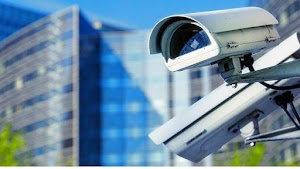Security cameras used to just record video. Now they can analyze what they see. This smart technology helps businesses catch real threats while ignoring false alarms.
How Camera Technology Has Evolved
Remember basic security cameras? They recorded everything or triggered alarms for any movement. Not anymore.
Traditional security camera systems relied on simple motion detection that couldn’t tell the difference between a person and a tree branch moving in the wind. Then came zone-based monitoring, which was better but still generated plenty of false alarms.
Today’s AI cameras understand what they’re seeing. They can tell people from vehicles, count visitors, and monitor specific areas. This intelligence makes them powerful tools for business security.
Smart Features That Make a Difference
Motion Detection That Actually Works
AI cameras don’t just detect motion – they identify what’s moving. They know when a person or vehicle enters a restricted area versus when a shopping bag blows across your parking lot.
Camera positioning plays a huge role in detection quality:
- Proper height installation
- Optimal viewing angles
- Strategic coverage planning
The right setup ensures your system sees exactly what you need. A properly positioned camera can monitor a wider area with better accuracy than multiple poorly placed units.
Accurate People Counting
Want to know how busy your business gets? AI cameras track entries and exits with remarkable accuracy. They can monitor multiple doors and give you real-time occupancy numbers.
This data helps with staffing decisions and ensures you stay within capacity limits. The system can reset counts daily, weekly, or on custom schedules to track patterns over time.
This feature can also provide useful information on where to place high profit margin products based on traffic flow.
Round-the-Clock Vision
Darkness used to limit security cameras. AI systems overcome this with automatic switching between day and night modes.
When light levels drop, the camera shifts to infrared capabilities for zero-light conditions. The best systems maintain their smart detection features regardless of lighting conditions. This consistent performance means your security never sleeps, even when your business does.
Advanced Capabilities Worth Knowing About
Detailed Object Detection. Modern security camera systems don’t just see movement, they understand context and even have the ability to notify if an object is left in a specific area for a predetermined amount of time.
People detection includes distance ranges and tracking movement patterns. Vehicle detection covers speed considerations and size classification. Systems may also monitor direction, helping you identify traffic patterns or vehicles going the wrong way.
Zone monitoring allows different alert settings for various areas of your property. You might want immediate notification for someone approaching your back door after hours, but just passive recording of activity in your parking lot.
What Makes It All Work
Behind the scenes, AI cameras use sophisticated video processors that are encoded with specific filters enabling them to discern the desired elements.
Resolution requirements cameras typically start at 4MP for clear images that AI can analyze effectively. Frame rates of at least 15 fps ensure smooth tracking without missing crucial moments of activity.
Your network infrastructure must support the bandwidth demands of multiple high-resolution cameras. Storage calculations need to account for longer retention times and higher quality footage. In general terms 4 to 6 mbps depending on resolution and frame rate.
Getting Your System Up and Running
A proper installation starts with planning. Before mounting any cameras, professionals like Surveillance Technology should review your existing infrastructure and advise on:
- Network capacity assessment
- Power availability verification
- Mounting location planning
- Detection zone mapping
- Lighting condition evaluation
During installation, security camera technicians mount each camera at precisely the right height and angle. They ensure proper protection from weather for outdoor units and secure all connections against tampering.
Configuration involves setting up detection parameters, alert preferences, and recording settings. This customization makes the difference between a generic system and one tailored to your specific security needs.
Keeping Everything Running Smoothly
Security systems need ongoing attention to maintain peak performance. Regular system checks catch potential issues before they become problems. This includes monitoring system health, verifying alerts work properly, and following established response procedures. User access management features within these systems ensure only authorized personnel can view footage or change settings.
Additionally, regular maintenance is important. Camera lenses need regular cleaning to maintain clear images. Detection testing ensures your AI features continue working properly as seasons change or your business needs evolve. And software updates provide new features and security patches. Keeping your firmware current protects against vulnerabilities and gives you access to the latest AI improvements.
Finally, make sure you have the right backups configured in your settings to mitigate hardware failures. This simple step can save hours of reconfiguration time if something goes wrong.
Finding the Right System for Your Needs
When considering AI security cameras, focus on your specific security challenges. A proper needs assessment should identify:
Features that directly address your primary concerns: If theft prevention is your goal, object detection and after-hours monitoring matter most. For customer service improvement, people counting and traffic analysis take priority.
Coverage requirements based on property layout: Some businesses need extensive perimeter monitoring, while others focus more on interior spaces.
Budget planning must include both initial equipment costs and ongoing maintenance. The most expensive system isn’t always the best for your needs. Sometimes a carefully planned smaller system covers your critical areas more effectively than a larger one with poor design.
Taking the Next Step
Start with a professional site survey to identify the right camera types, optimal locations, and total system requirements for your business.
With proper planning and implementation, AI security cameras provide better protection with less hassle than traditional systems. They don’t just record problems – they help prevent them.

















